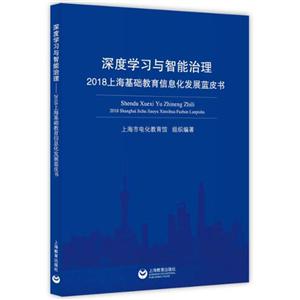口语机器翻译

|
口语机器翻译作者:瑞诺尔(Manny Rayner) 开 本:16开 书号ISBN:9787301171561 定价:46.0 出版时间:2010-08-01 出版社:北京大学出版社 |
口语机器翻译 目录
导读PrefaceAcknowledgementsIntroduction1.1 What This Book Is About1.1.1 Why Do Spoken Language Translation?1.1.2 What Are the Basic Problems?1.1.3 What Is It Realistic to Attempt Today?1.1.4 What Have We Achieved?1.2 Overall System Architecture1.3 An Illustrative Example1.4 In Defence of Hand-Coded Grammars1.5 Hybrid Transfer1.5.1 The Need for Grammatical Knowledge1.5.2 The Need for Preferences1.6 Speech Processing1.7 CorporaPart 1 Language Processing and CorporaTranslation Using the Core Language Engine2.1 Introduction: Multi-Engine Translation2.2 Word-to-Word Translation2.3 Quasi Logical Form2.3.1 Introduction2.3.2 Structure of QLF2.3.3 QLF as a Transfer Formalism: Examples 2.3.4 Head-Head Relations in QLF2.4 Unification Grammar and QLFs2.4.1 The CLE Unification Grammar Formalism 2.4.2 Unification Grammar Example: French Noun Phrases2.4.3 Example 2a: Clauses in Swedish2.4.4 Example 2b: Relative Clauses in Swedish 2.5 Orthographic Analysis and the Lexicon2.6 Transfer Rules2.6.1 Pre- and Posttransfer2.7 The QLF-Based Processing Path2.7.1 Linguistic Analysis2.7.2 Transfer and Transfer Preferences2.7.3 Generation2.8 SummaryGrammar Specialisation3.1 Introduction3.2 Explanation-Based Learning for GrammarSpecialisation3.2.1 A Definition of Explanation-Based Learning3.2.2 Explanation-Based Learning on Unification Grammars3.2.3 Category Specialisation3.2.4 Elaborate Cutting-Up Criteria3.3 An LR Parsing Method for Specialised Grammars 3.3.1 Basic LR Parsing3.3.2 Prefix Merging3.3.3 Abstraction3.4 Empirical Results3.4.1 Experimental Setup3.4.2 Discussion of Results3.5 ConclusionsChoosing among Interpretations4.1 Properties and Discriminants4.2 Constituent Pruning4.2.1 Discriminants for Pruning4.2.2 Deciding Which Edges to Prune4.2.3 Probability Estimates for Discriminants4.2.4 Relation to Other Pruning Methods4.3 Choosing among QLF Analyses4.3.1 Analysis Choice: An Example4.3.2 Further Advantages of a Discriminant Scheme .4.3.3 Numerical Metrics4.4 Choosing among Transferred QLFs4.5 Choosing Paths in the ChartThe TreeBanker5.1 Motivation5.2 Representational Issues5.3 Overview of the TreeBanker5.4 The Supervised Training Process5.4.1 Properties and Discriminants in Training5.4.2 Additional Functionality5.5 Training for Transfer Choice5.6 Evaluation and ConclusionsAcquisition of Lexical Entries6. 1 The Lexical Acquisition Tool, LexMake6.2 Acquiring Word-to-Word Transfer Rules6.3 Evaluation and ConclusionsSpelling and Morphology7.1 Introduction7.2 The Description Language7.2.1 Morphophonology7.2.2 Word Formation and Interfacing to Syntax7.3 Compilation7.3.1 Compiling Spelling Patterns7.3.2 Representing Lexical Roots7.3.3 Applying Obligatory Rules7.3.4 Interword Rules7.3.5 Timings7.4 Some Examples7.4.1 Multiple-Letter Spelling Changes7.4.2 Using Features to Control Rule Application7.4.3 Interword Spelling Changes7.5 Debugging the Rules……Part 2 Linguistic CoveragePart 3 Speech Processing口语机器翻译 节选
《口语机器翻译》主要内容简介:计算语言学研究滥觞于上世纪五六十年代的机器翻译研究。中文的相关研究也几乎同步开始,1960年起在柏克莱加州大学研究室,王士元、邹嘉彦、C.Y.Dougherty等人已开始研究中英、中俄机器翻译。他们的中文计算语言学研究,可说是与世界*尖端科技同步的。
口语机器翻译 相关资料
插图:棒性和系统的自适应能力。同书面语相比,口语的声学特性有一定的特殊性,这类语音的基频、时长、幅度等特征都随表达内容、感情色彩等不同,变化的范围比朗读语音大得多,同时还有非语声信号和噪声,充分研究这些特性,建立精细的声学模型非常重要。而且,讲话人往往是在较强的背景噪声或多讲话人环境下发音的,如果是电话自动语音翻译系统,还存在通讯干扰等其他因素的影响,因此,提高语音识别在不同说话人、不同声学环境及通道条件下的鲁棒性,在口语翻译系统中尤其重要。另外,在语言学层面,口语句子中含有大量的修正、重复、口头语、省略等非规范语言现象,研究这些特征,对语言模型进行完善,包括建模、算法和训练等各个方面,将有助于提高语音识别的正确率。(2)翻译方法有待于进一步研究。尽管统计翻译方法具有较高的鲁棒性,但是,对非规范语言现象和噪声的处理能力仍然十分有限,而且这种方法与训练语料的规模和质量密切相关。统计方法与规则方法的结合一直是人们所追求的,但是具体如何融合,多翻译引擎以什么样的集成方式可以获得最好的系统性能,统计模型赖以训练的语料规模达到多大才算充分,非语言信息(手势、表情、说话人角色等)如何融人翻译模型等,诸多问题都远远没有得到解决。
社会科学 语言文字
在线阅读
- 最新内容
- 相关内容
- 网友推荐
- 图文推荐
| [高考] 2022 西安电子科技大学《软件工程》大作业答案 (2022-04-25) |
| [家长教育] 孩子为什么会和父母感情疏离? (2019-07-14) |
| [教师分享] 给远方姐姐的一封信 (2018-11-07) |
| [教师分享] 伸缩门 (2018-11-07) |
| [教师分享] 回家乡 (2018-11-07) |
| [教师分享] 是风味也是人间 (2018-11-07) |
| [教师分享] 一句格言的启示 (2018-11-07) |
| [教师分享] 无规矩不成方圆 (2018-11-07) |
| [教师分享] 第十届全国教育名家论坛有感(二) (2018-11-07) |
| [教师分享] 贪玩的小狗 (2018-11-07) |






